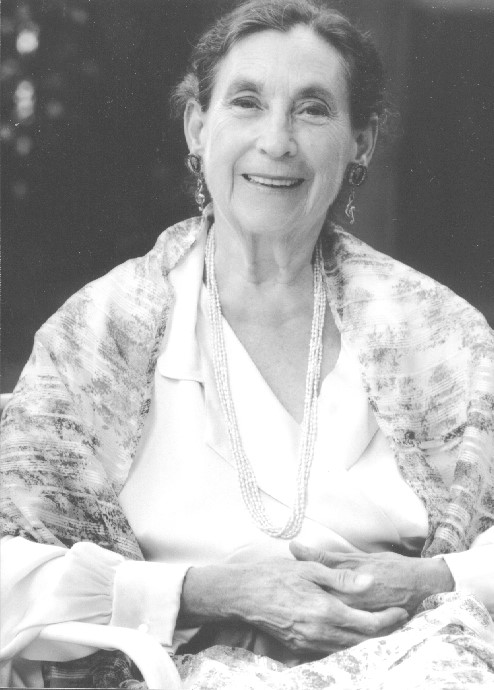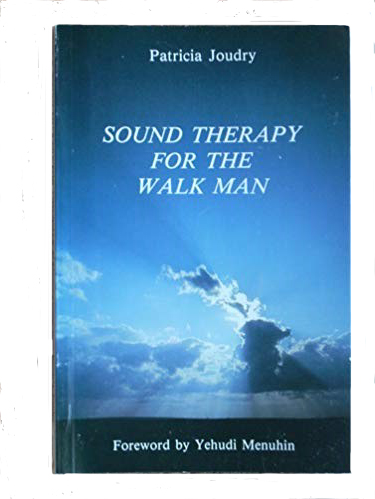3.2 Patricia Joudry.
What problems did Patricia Joudry have that were helped by Sound Therapy?

Prior to using Sound Therapy, Patricia Joudry suffered from the Cocktail Party Syndrome, hyperacusis, (sound sensitivity) fatigue, insomnia and writers’ block.
The condition, commonly known simply as the “cocktail party syndrome”, is where the listener cannot follow a conversation if there is any background noise. This condition had affected Patricia for many years, and it was primarily for this reason that she first undertook Sound Therapy. The condition had affected her to the point where she could not tolerate conversation in the kitchen if the tap was running, she could not attend dinner parties unless conversation was restricted to one person at a time. When in a restaurant, if there was background music playing, she would always ask for it to be turned off so that she could converse. The Cocktail party syndrome is very common for people with hearing loss, and usually represents their most challenging hearing issue. In Patricia’s case, she had acute hearing, but was still unable to tolerate background noise.
After using Sound Therapy this condition was almost totally alleviated, so that she could function normally in most social situations.
Patricia also had hyperacusis – meaning she was extremely sensitive to sound, and could not tolerate any loud noises such as trucks, buses or rock music. This meant that every trip to town was an ordeal for which she had to brace herself. To her amazement, once she had he Sound Therapy in its portable form, she could wear it into town and feel insulated and protected from the stressful impact of noise, as though cocooned by the music she carried with her.

Her new sound tolerance meant that she could now be more mobile and relaxed and even broadened her taste in music to enjoy more contemporary styles.
In addition to these ear related problems, Patricia suffered from chronic insomnia and exhaustion.
As a result of Sound Therapy she was experienced a dramatic shift in energy and was virtually cured of the fatigue and the insomnia. Her exhaustion gave way to such a bountiful sense of continuous energy that she wrote a chapter in the book called “Plugged in to the cosmos,” where she described what seemed like an endless new energy source.
She also recovered from her writer’s block, which used to plague her at regular intervals, but was replaced with a continuous level of inspiration and flow. She was also surprised to discover the remediation of her technical incompetence, so that when it came time to operate the recording equipment for making the Sound Therapy programs she was able to do this with ease.
How did Patricia Joudry add to the practice of Sound Therapy?

She made the method portable and accessible by releasing it as a portable audio program with her book.
The portable method, due to its convenience for long term use, brought new insight into the effect of Sound Therapy on hearing.
Sound Therapy was adapted for portable audio in the 1980s by Patricia Joudry and Rafaele Joudry, authors of Sound Therapy: Music to Recharge Your Brain. This meant that thousands of people who did not have access or time to attend the lengthy and costly clinic process could now use the therapy during daily activities.
Long term use brought to light more benefits in the areas of sleep, improved energy, reduced stress, relief of tinnitus, improved sound differentiation and in some cases better hearing.
Patricia Joudry underwent the clinical treatment herself and received great benefit from it. Then, with the help of some Benedictine monks in Canada she went on to develop the portable, self-help method.
As a result of the Joudrys’ work, Sound Therapy is now affordable and accessible to wide numbers of people all over the world.
While several other more portable methods adapted from Tomatis’s work focus primarily on children and learning difficulties, the Joudrys’ work is unique as it is geared first toward the adult listener. Because it was developed by Patricia Joudry, initially for her own use, it has been tailored to the needs of adults and those with hearing difficulties. Because of this the method is highly convenient and suitable for active and busy lives.

Listening is encouraged during daily activities, requiring no time to be taken out of the day. With low volume sound and highly portable equipment, Sound Therapy fits easily into your daily life. The information and educational materials are geared firstly to the adult listener, enabling any person to become their own therapist.
However, a unique aspect of the therapy for children has also been developed by the Joudrys exclusively, due to their natural linguistic proficiency as writers. This is the element of spoken voice and stories, which are provided in our children’s programs.
Rafaele Joudry continues the work, having written two additional books on Sound Therapy, Triumph Over Tinnitus and Why Aren’t I Learning, and developing the SYNERGY practitioner training program, plus many other resources and support tools.
Interestingly, the first studies to examine the effect on hearing and ear related problems were the ones using the Joudry method. It was only with the advent of the portable method that the effectiveness of Sound Therapy for hearing disorders became apparent, as it usually requires long term treatment to see effect in these areas.
These new directions have helped to advance Tomatis’s theories about the role of the middle ear muscles, as well as more recent knowledge about brain plasticity and how the efferent and afferent (motor and sensory) neural pathways of the auditory system can be enhanced through Sound Therapy.
More recent research in these fields has begun to explain how these improvements may be possible.

